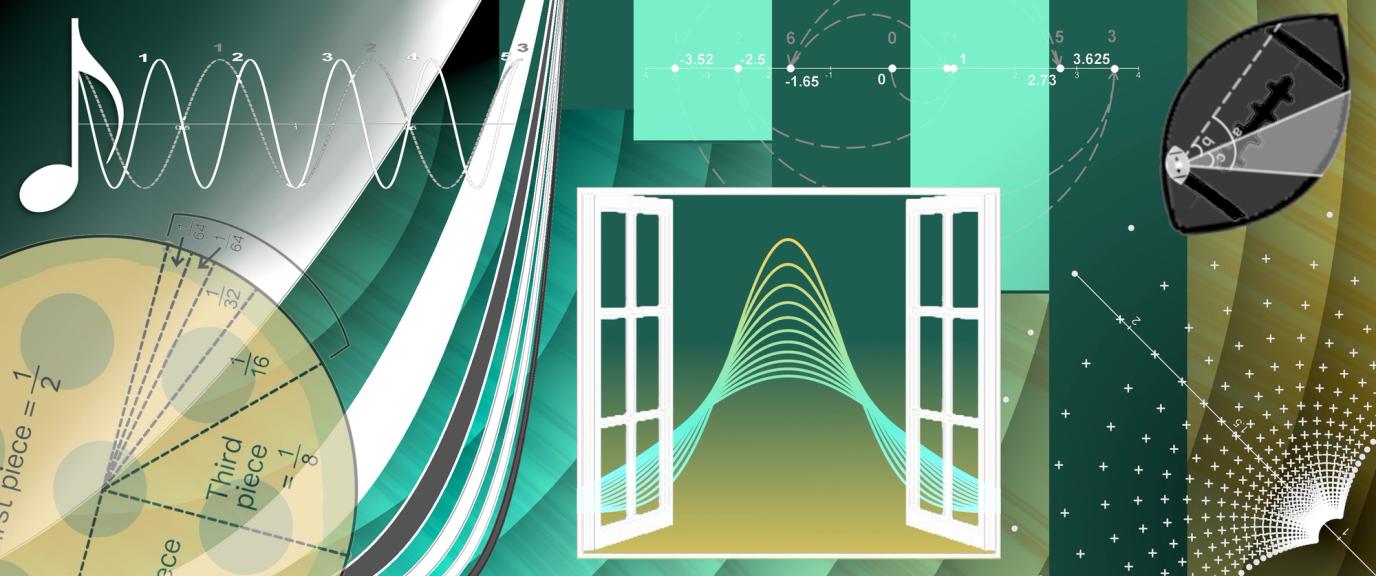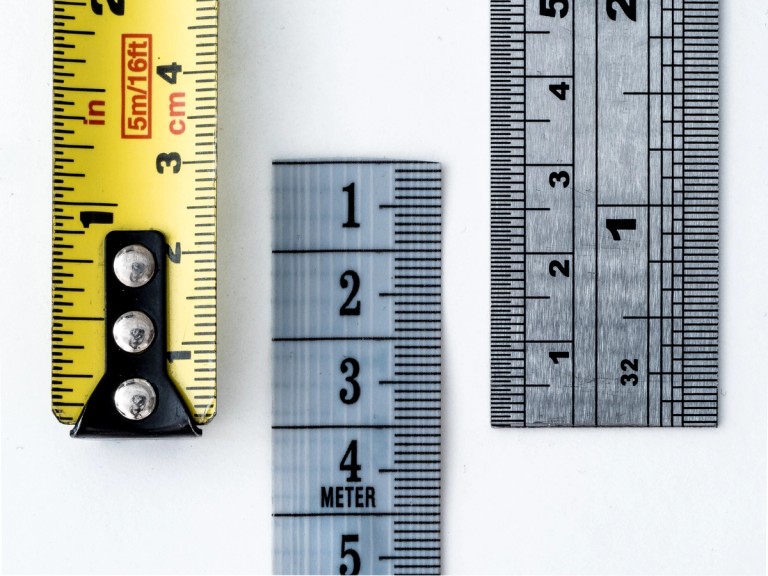“Negative numbers are ‘false’.” — Descartes
“Negative numbers are ‘utter nonsense’.” — Pascal
Context of negative numbers
In the introduction, I encouraged you to think like a child so you would bring the curiosity of a child with you. But, I stated, of course, that we don’t want the intellect of a child. However, for a moment, I want to ask you to do something impossible to do completely, but give it your best shot. You likely are familiar with negative numbers. They don’t seem strange or unusual. But when you were a child, you were taught about negative numbers. It likely took years of working with negative numbers to become comfortable with the concept. Now, I’m asking you to try to imagine what it was like before you learned about negative numbers. So, rather than return to a curious state, I’m asking you to return to a skeptical state of mind. After all, up to that point in your life, if you had 3 apples, the idea of taking away 4 apples would be absurd.
Most of us likely learned about negative numbers from a number line. They actually make sense on the number line. Just repeat what we did to the right of 0 but now go to the left of 0 and tack on a negative sign in front and call it good. But remember a number line is an abstraction. If we’re thinking like a child, we would be thinking in the physical world, and there is not an example of something less than nothing. It doesn’t make sense.
Sure, we could say the temperature is -5 degrees. But the temperature scale is just a made-up number line to which we arbitrarily assign numbers. Temperature measures the average motion of molecules, but there is no negative average motion. Perhaps we would think of a bank account that was $25 and we made a purchase of $40. Sure, we can say that our balance is -$15. But can we go to the bank and see the bills for -$15? What we can say is we owe the bank $15. So when we pay the bank, we could give them $15 in cash. Again, the physical world only works with positive items.
Now, let’s go one step further. Imagine a world that had not thought of the idea of a negative number. We just identified that we do not need them in the physical world. How did negative numbers creep into the math world?
Actually, the ancient Chinese were the ones who thought about negative quantities. They spent hundreds of years thinking about the concept of a negative quantity. Hundreds of years BC, they used rods for counting and chose red rods for positive quantities and black rods for negative quantities. With this idea planted, surely the Greeks would take this and move it forward. No, the Greeks missed out on this opportunity. Yes, Euclid, Archimedes, and company did not write about negative numbers.
Then the dark ages arrived and there was some progress with negative numbers but not much. Finally, the Middle ages and then the Renaissance occurred in Europe, and many of the more modern mathematicians brought incredible ideas to the math world. Surely, the negative numbers would have been a low hanging fruit they could quickly develop. Actually, it was a slow adoption through the 15th, 16th, 17th, and even 18th century. It wasn’t until the 19th century when we finally arrived at our current view of negative numbers.
Think about this for a moment. Some of the great math people in history, Euclid, Archimedes, etc., did not work with negative numbers. Then, the more modern math people worked with them, but it took centuries for them to arrive as we know negative numbers today. Isn’t that fascinating? It’s not like these people couldn’t comprehend new abstract ideas. Obviously, these people were pioneers in creating new abstract ideas. However, negative numbers required many great minds over many great centuries to arrive at where we are today. I share all this to give you an appreciation for your ability to abstract ideas by understanding negative numbers. There is great potential for abstraction in your mind that we will try to unleash. Let’s try to understand how we view negative numbers today.
Negative Numbers
We’ll start by considering the negative numbers in a similar way to how we reviewed the positive numbers on the number line. In the previous section, we only considered the positive numbers and 0. From the perspective of a number line, it is obvious that we can simply reverse course on the number line and extend it to the left of 0 and follow the same pattern we used to the right of 0, only append a negative sign in front. Our sense of symmetry makes this an incredibly intuitive next step. Why did it take the great minds so long to think about this? First, it wasn’t until the 17th century that math people wrote negative numbers on a number line. Again, don’t underestimate the value of a number line. Many of the greatest minds never thought of a number line, and thus did not benefit from the intuition it brings.
However, once negative numbers arrived on a number line, they did not instantly become adopted. This is because math is not so much about the object, the negative numbers, but the action. Negative numbers would quickly lose their appeal if they were just an extension of the number line. But, with the positive numbers, we perform actions like addition, subtraction, multiplication, and division.
So math people would quickly start thinking about these things to see if we can do the same with the negative numbers as we do with the positive numbers. We need to raise the bar a bit when we say “doing these things.” Math people would not want new rules for negative numbers because they already have them for positive numbers. That is ugly math and, remember, we don’t want ugly math. Beautiful math follows the same rules. If we can do the same action with the same rules, then we have created beautiful math. This is beautiful because we just expanded our world. At one time, negative numbers did not exist. Now, they not only exist but are doing the same thing as the positive numbers. So how does this work?
For addition, we can think of the action as steps on the number line. So, whatever number we are at, if we add 3 to that number, then the result is 3 steps to the right of the number line where each step is an increase of one integer from the previous. So, if we start at 1 and add 3, then we move 3 numbers to the right of 1 and land on 4. We knew that. But, to be clear, we want to think of actually starting at 0. In other words, think of it as 0+1+3. That means we start at 0, move 1 to the right, then 3 to the right, and arrive at 4. Does the same rule apply to negative numbers? Consider -1+3, or actually 0-1+3. Start at 0. Move 1 to the left because it is negative and arrive at -1. Then add 3 which requires moving 3 steps to the right and land on +2. This makes sense and is consistent.
We can do the same thing with subtraction except our action is going left on the number line. Notice this is actually where negative numbers are not only consistent but also solve problems we had before we used negative numbers. If we want to calculate 4-3, or 0+4-3, we start at 0, move 4 to the right (because we’re adding), subtract 3 (which requires moving 3 steps to the left of 4), and arrive at 1. But, if we subtract 5 instead, we now have numbers there waiting for us and we arrive at this newly minted -1. So, not only does the action of subtraction work for negative numbers, it actually improves the process.
OK, now consider multiplication. What is 3 times 4? We can think of 3 sets of 4 objects and then count the objects and arrive at 12. We don’t get this from a number line, but we do get it by organizing objects in a specific order. Now, what is -3 times 4? Clearly, thinking about it as negative 3 sets of 4 doesn’t make sense. We can try it the other way and say 4 sets of negative 3, but that doesn’t help much either. We can’t do this action using rows and columns. Are we stuck?
Let’s think about what worked for addition. What worked for addition was the action of moving on a number line. Another way we can think of 3 times 4 is 0+3+3+3+3. Thus, we can just repeat what we did for addition and do it multiple times. We can rewrite -3 * 4 as 0+(-3)+(-3)+(-3)+(-3). So start at 0. Then, if we add a negative number, we move left on the number line, which gets us to -3 after one addition, then -6, then -9, and finally, after 4 additions, -12. Since we can think of multiplication as repeated addition, this works.
But the real challenge is how to interpret . Again, we can’t use the rows and columns method. It also appears that the repeated addition method doesn’t work. But we considered -3 * 4 as repeated addition because 4 is positive. What if we change the sign of 4? Logic would indicate that we now have repeated subtraction. So, repeat the previous expression and change addition to subtraction. That means we go from 0+(-3)+(-3)+(-3)+(-3) to 0-(-3)-(-3)-(-3)-(-3). Now, we know subtraction is moving to the left and negative numbers also move to the left. We want to think of this in broader terms where it is not about left and right but about the same way or the opposite way. Thus, + means the same way and - means the opposite way, where going to the right is the initial default.
Given this perspective, start at 0, then the subtraction sign means go opposite of the default, which is go left, but we are subtracting a negative number, which is another opposite, so we are back to moving to the right. That means we start at 0 and, after 4 sets of 3 steps to the right, we land on +12. This is one way we determine that -3*-4 is a positive result. Does that actually make sense and not just a rule to remember? When you think of it in concrete terms, something like doesn’t make sense. But when we think about this as a process of extending something we already agreed was correct, it seems to be a natural result. I wonder what Archimedes would think if he was exposed to these ideas. Would he have thought of this as important or just a curious idea?
There are other actions, such as division and exponentiation, that math people had to consider before they were ready to allow negative numbers fully into the number system. But, eventually, they accomplished their goal. As a result of all this work, we now have negative numbers as part of our number system, fully enshrined into the math hall of fame. For many great players inducted into the baseball hall of fame, such as Jackie Robinson, their accomplishments are interesting to learn about, but it is their story that brings them to life. Math is full of these types of stories where for thousands of years, a certain idea did not exist. Then, some mind, or likely a group of minds, birthed the idea into existence, and now it is here to stay for all of us to enjoy.
How math comes to life
The goal for Lazarus Math is for your math to come to life. One big step is to witness how math itself has come into our world. There are so many fascinating stories waiting to be told. It is difficult to appreciate when it arrives in a textbook we must master before the end of the semester or we don’t achieve the grade we are striving for. There is so much that is missed in that packaging process. Now that we’ve seen how the numbers, including the negative numbers, have arrived in our world, let’s get a feel for the common way other math comes to life.
The starting point for all math, and the one usually overlooked, is that a math idea did not exist for probably a long time. Remember math occurs in our mind, not in the physical universe. So all of this had to be made up by somebody at some time. There is some math that has always existed in the physical world that we uncover. An example is the orbits of planets around the sun. The orbits occurred before math people understood the math behind it. How do we determine the orbit of the planets? It may seem logical that we observed something in the physical world and then created math to explain the physical reality. That may seem logical, but this rarely happens.
The normal way math arrives is the way the negative numbers arrived. Ideas are formed and expanded. The goal is to not create something totally new. We do not like to reinvent wheels. Rather, the goal is to extend a known concept into something bigger, possibly better and even more beautiful. This is what happened with the negative numbers. It just seemed natural to extend the positive numbers in the negative direction, which is left of 0 on the number line. So using symmetry to extend a known idea often is the starting point.
To develop the idea, all the actions on the original idea must be applied to this new extension and how these actions “work” must be determined. Sure, there may be new “rules” such as a negative times a negative is now a positive. But the goal is to retain the principles. Thus, to achieve this goal, the principles of repeated addition was used as a way to perform multiplication.
The key thing to think about here is the goal in the process is just to pursue growth and beauty, to be curious. We’re extending numbers to negative numbers because we want to see if we can, to see if it works. The result is something even better than before because now we can subtract any two real numbers from each other and we get a real number. That is beautiful for math people because we just completed subtraction. Before there were negative numbers, math people were putting together a puzzle that had missing pieces. We all appreciate the thrill of finishing a puzzle. This may seem like a silly analogy, but most math people consider math as a game, a puzzle. Like any game or puzzle, the thrill is in the satisfaction of completing. You don’t put a puzzle together so you can be a better engineer. Likewise, new math is birthed into the world not to solve the world’s problems. Of course, the cool thing about it all is that often it eventually does solve our problems. But that rarely is the intent.
There is one more thing to think about in this math creative process. Even though most math ideas are developed over a long period of time by many people, at one point a person gets to be the person to put the final puzzle piece in and declare it finished. It would be thrilling if one of us could do that. The ability to complete a math idea is special. But it is even better to be the person who has the initial vision of what the puzzle is to look like. Math puzzles don’t come with a picture included. Someone needs to draw that picture. The person who starts with a blank sheet of paper, or one that is essentially blank, and paints a picture that others want to piece together is truly an artist at work. It took many math people a long time to put the negative number puzzle together.
But imagine being the first person who thought of a negative number over 3000 years ago. At the time when you thought of it, you likely thought it was just a neat idea, a way to expand our set of numbers . Would it ever be used? Probably not. We never needed it before. I’m sure there were plenty of people who opposed it. The great mathematicians for centuries opposed it. So, you likely died inventing something that probably seemed to be a very small idea but with no real world application.
In the end, I think that is the story of doing math—doing something that others don’t think is needed and answering questions nobody is asking. Often these questions are only small improvements to the world of math. But they are still improvements. And even these small improvements have contributed to make math as powerful as it is today. However, once in a while, a brilliant idea changes the world.
The idea of inventing negative numbers is one of those ideas. Then, much later in its development, something like the number line is invented that allows us to visually make sense of negative numbers. Do you see the wonderful pattern emerging? Abstract ideas, then extend the ideas based on known math patterns. Eventually, there is a visual aid that can capture all the ideas. In this case, the application of negative numbers has crept into our world in forms such as debt, temperatures below 0, etc. But the number line and the application of negative numbers would be in the final few chapters of the history of negative numbers, not in the first chapter as we would easily assume.
We will do a lot of creative things in Lazarus Math. I don’t expect you to fully understand the math just going through it. But I don’t want you to dismiss it because you don’t see how it applies to your life. Remember it is about the journey, not the destination. Your math will come alive as you join this journey.
The take-away
I hope you enjoyed the journey through negative numbers. My hope is your take-away isn’t so much about the story of negative numbers but the mega story of math, of how human beings came together and agreed on a process called logic. We have used that unified idea to bring amazing things to life that have crossed culture and time. Math is not a short-term race but a lifetime process of growing and learning. One idea builds on another idea. Our world expands as we extend ideas in new ways. There is no limit to this creative process. We get a short time here on earth to play our part, to witness the art of the past and even create new things on our own. Right now, you may not think that you are capable of creating anything new. Creating something new that is all your own is the last step in your math coming alive. We will continue to pursue how you fit into this mega story as we journey further together.










